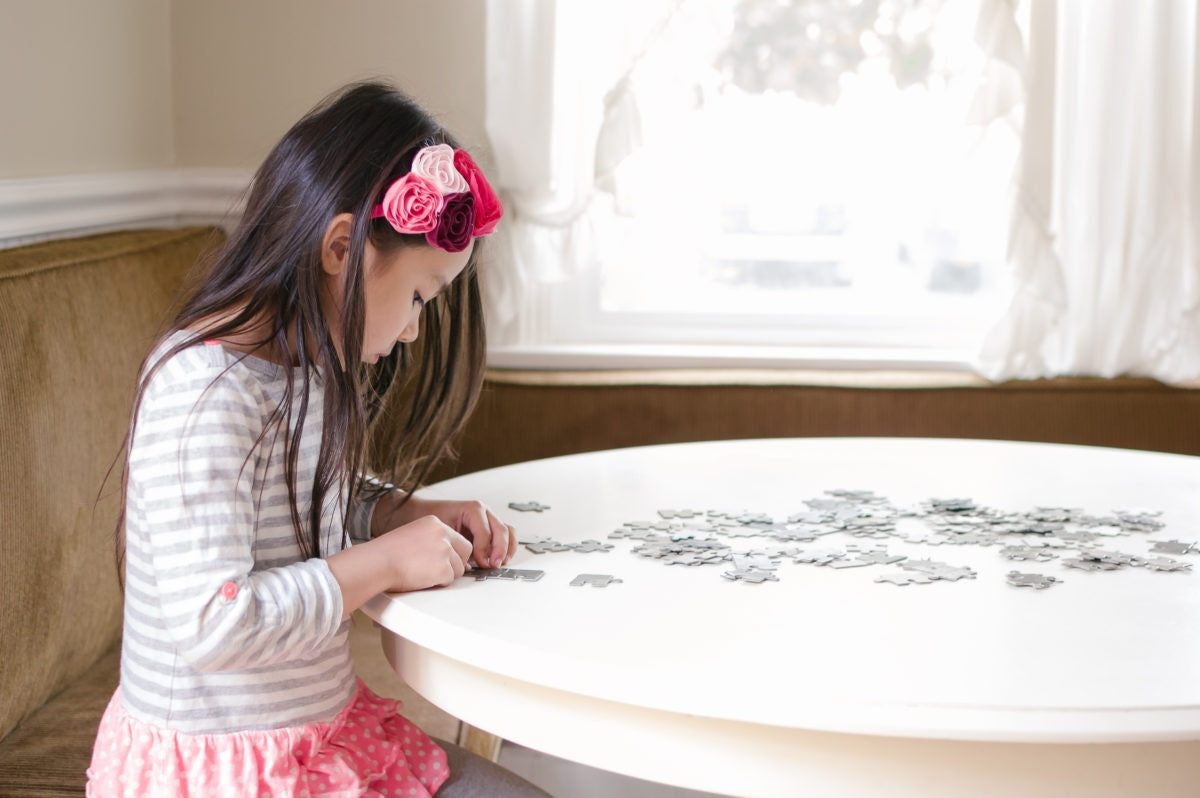I distinctly remember the drive home while wearing glasses for the first time. I remember studying the leaves on the trees, the small lettering at the bottom of the billboards, and the shingles on the buildings we passed. I could read license plate numbers several cars away and distinguish between distant birds and planes.
It occurred to me that, until this day, I had quite literally been seeing things differently than everyone else. Or at least, different from the way I was supposed to see.
I’m not sure when exactly my vision failed me, but the doctor determined that I needed glasses when I was 11 years old. Because of this, I have a very clear memory of what it felt like to find out that something I had taken for granted was wrong. Unless someone is constantly bumping into things (which I was not), people don’t generally realize their sight is off until they are tested and someone tells them so.
Many years later, the memory of that drive came rushing back to me while I sat in my therapist’s office. She handed me a piece of paper detailing the list of ways I might react to certain situations. She had written a list of phrases that appeared all too familiar to me.
I’m a failure.
I could never do that.
I never do anything right.
I’m not smart enough for this.
What’s the point?
I know that most people have these thoughts from time to time, but she pointed out, and rightly so, that part of the problem lay in the fact that I automatically had these thoughts. I had spoken them to her in our awkwardly casual introduction, not realizing that they were unusual thoughts to have. They indicated a deeper problem that needed to be addressed.
Once again, it occurred to me that I quite literally saw things differently, or thought about things differently, than most people.
I had had hints of this before. In high school, I had once shared my writing with a friend, and she remarked that she had never realized how depressed I was. I had assumed that my thoughts were little more than typical teenage angst, but she thought otherwise.
A few years later, another friend observed that one of my side comments was “passively suicidal,” meaning I wasn’t actively trying to kill myself but wouldn’t really mind dying. Again, I was truly in a funk, but I assumed that was all it was.
I had occasionally gone to therapy for depression. It never lasted long. The first time, my parents likewise believed it was just teenage angst. The second time, I left voluntarily because the therapist unintentionally brought up a whole new set of issues I had not considered and was not at all ready to address.
For the most part, I figured out early on that running and writing were my personal forms of therapy. I felt significantly worse whenever I got caught up in something that kept me from those hobbies.
But even running had a darker edge that later became clear to me. I earned a true place on my track team shortly after I had gone through my first breakup. I became fixated on running, fueled by my anger and frustration. I found solace in physical exertion, in pushing myself to be better.
Most dangerously, I found solace in the pain.
Even that fact did not became clear to me until I became a mother. I wanted to be a mother and was beyond excited to become one. Even now, my daughter is my greatest source of joy. But I’d been concerned about postpartum depression and anxiety, knowing I was susceptible. My husband even bought me a book that offered tips on dealing with these conditions.
I made it through the first few months okay. I struggled with breastfeeding, but eventually, even that became easier. I found some peace.
When that stage came to an end, the change and some unexpected difficulties in my personal life hit me hard. I found myself biting my lip at work until it almost bled. A frivolous comment would haunt my mind for days or weeks. The few nights my daughter decided to let me sleep uninterrupted, I wound up tossing and turning and considering what more could go wrong.
But it wasn’t until I stared at my wrist and considered slicing into the skin to let the pain bleed out that I realized I needed help.
I had never thought about self harm before, but it made sense to me. I had always filled that void with exercise. With a new child, a full-time job, and a final semester of grad school, I could no longer fully dedicate myself as I had done in the past.
When I met with my gynecologist, the necessary screening for postpartum depression and anxiety had me crying in her office. She suggested a therapist and prescribed a mild dose of Zoloft, then told me to check back in shortly.
For awhile, that worked well. It “took the edge off,” as they say, and I was able to function again. I also had a supportive group of coworkers and friends to help me.
At the end of the year, I took on a new job. I found myself with a notoriously difficult boss who once told me to “man up.” (And she was a woman.) My workload drastically increased. Within two months, I began seeing a new therapist and increased my dosage of Zoloft. It helped me get through the next few months until I was eventually laid off, which may have actually been a blessing in disguise.
I did not tell many people I was on medication. I only brought it up when others in similar situations reached out for suggestions. While those already seeking treatment appreciated my admission and conversed openly about what I had tried, I noticed that others were more skeptical. When I mentioned weaning myself off the medication, they were even less receptive. They couldn’t understand why coming off my medication was a struggle. They suggested I meditate, exercise harder, or try other holistic remedies I had already tried or was still trying.
Worse, they told me to just stop letting things bother me. Get over it. Ignore it. Stop being self conscious. Stop thinking like that. They were genuinely oblivious to the fact that I could not, in fact, just “stop.”
It struck me once again how little we truly seem to understand the nature of mental illnesses. Yes, it is difficult to understand symptoms that cannot be seen or proven with a blood test. But we can all agree that illnesses and impairments have varying degrees of influence on a person. We are aware that there are people, generally doctors, who are far more knowledgeable about these illnesses than we are, despite what internet resources might convince us.
In spite of all this, our society has a very inadequate response to mental illness. We don’t tell someone with poor vision to try to see better. Nor do we expect all people see the same. One cannot simply say to another, “Oh, you don’t have your glasses? Just try mine.” We know it doesn’t work that way. Some are nearsighted, some are farsighted. Some only need glasses for reading. Others cannot leave their bed without some kind of visual assistance. Still others are colorblind. Yet we have no difficulty acknowledging that different levels of adaptation are possible and absolutely necessary for different types of sightedness.
If only we could grasp this same concept when considering our minds.
Just as with vision, some people need more help than others. Some need someone to talk to. Some need medication. Some need a mixture of both. Some can get by with a consistent exercise routine while others require hospitalization and the ready services of knowledgeable doctors. Sometimes different circumstances call for different measures, just as sometimes someone needs the hospital while other times an over-the-counter drug will do.
We all have different battles and bruises, so our remedies need not be the same.
Perhaps if we allowed ourselves to grasp the complexity, and the reality, of these illnesses, we could begin to find solutions.
It all comes down to how we chose to see it.



